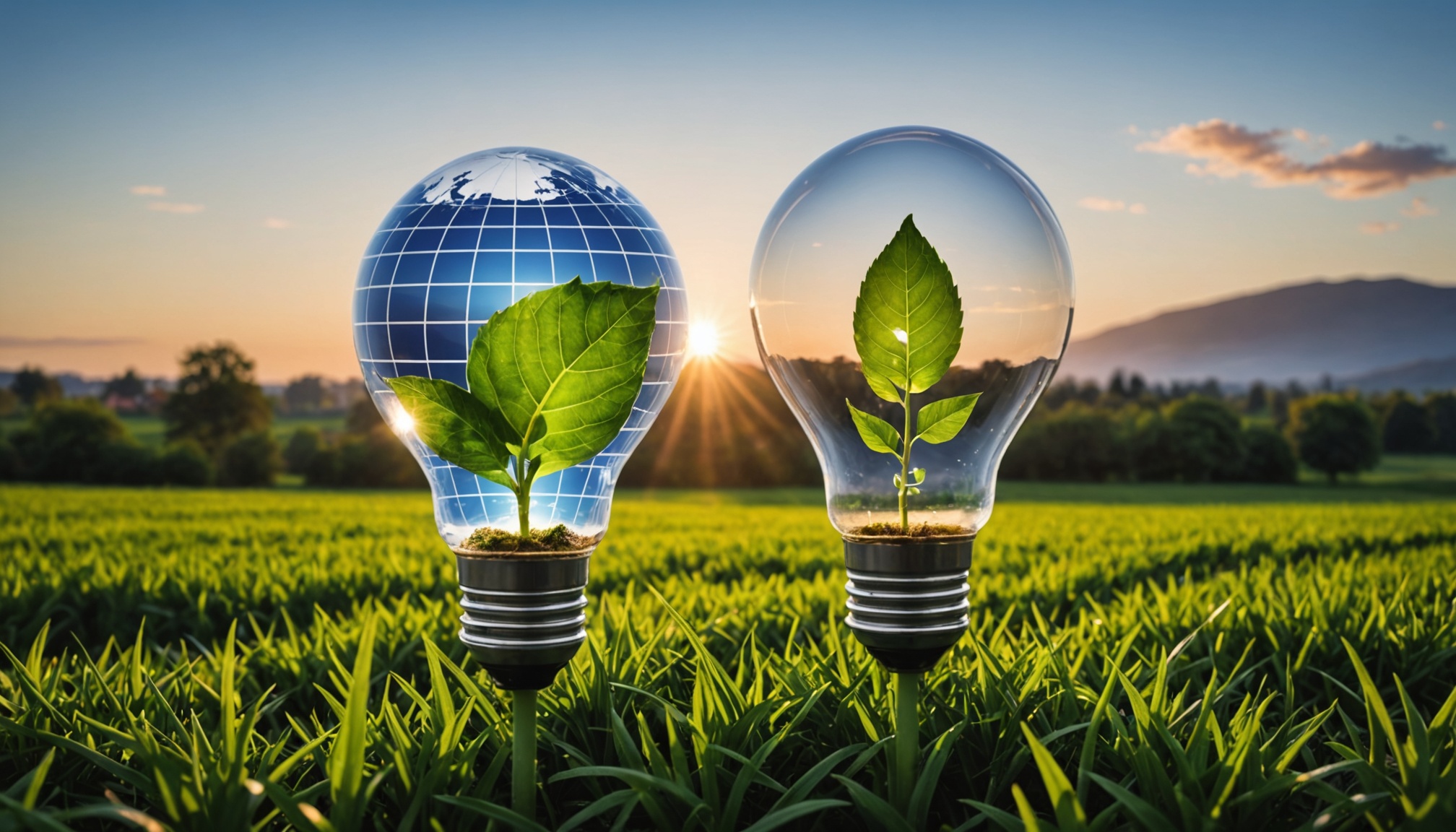Vallourec is at the forefront of the shift towards sustainable energy solutions. By embracing innovative technologies and renewable resources, the company is dedicated to reducing its environmental footprint. This commitment not only highlights Vallourec’s responsibility but also reflects broader trends in the energy sector. As we explore their pioneering approaches, discover how they are paving the way to a greener future while addressing the urgent needs of our planet.
Overview of Vallourec’s New Energy Solutions
Vallourec has positioned itself as a pioneer in addressing modern energy challenges through innovative and sustainable solutions. Recognizing the urgent need to adopt new energy strategies, the company focuses on integrating advanced technologies to facilitate the transition to a low-carbon future. This approach underscores the importance of reducing emissions and advancing renewable energy capacities across the globe.
Also read : Proven techniques to enhance customer loyalty for uk subscription services
Addressing Contemporary Challenges in Energy Transition
The energy sector faces mounting challenges, including climate change, dwindling fossil fuel reserves, and rising global energy demands. Vallourec addresses these issues with diverse solutions, such as geothermal systems, offshore wind foundations, and carbon capture and storage (CCUS) capabilities. Each solution is crafted to enhance efficiency and adaptability in transitioning to sustainable energy sources. These efforts align with global trends to reduce emissions and increase renewable energy investments, ensuring a greener future.
Innovating for a Decarbonized Future
Innovation is key to resolving today’s energy dilemmas. Vallourec contributes by creating durable and sustainable products like corrosion-resistant tubes for solar and bioenergy applications or high-pressure hydrogen storage systems. Their expertise aligns with emerging renewable technologies, cementing their role in shaping a cleaner, more efficient energy landscape.
This might interest you : Maximizing Profits: Top Subscription Model Tactics for UK Fitness Brands
Emerging Renewable Energy Technologies
Innovations in Hydrogen Storage Solutions
The potential of hydrogen energy development lies in its ability to provide clean and sustainable power. One critical advancement is in large-capacity, high-pressure hydrogen storage solutions, essential for both stationary applications and mobility sectors. Companies like Vallourec are spearheading innovations by employing durable materials and designs that withstand extreme conditions, ensuring efficient and safe storage. These developments also address scalability, preparing hydrogen for widespread adoption in renewable energy trends. Modern advancements incorporate intelligent systems that monitor and optimize energy storage solutions, reducing losses and enhancing reliability.
Advancements in Carbon Capture Utilization & Storage (CCUS)
CCUS technologies are transforming the way we handle emissions. By capturing CO2 from industrial sources, these methods prevent harmful gases from entering the atmosphere. Innovations include tubular solutions designed for transporting and storing CO2 in geological reservoirs. This has made carbon capture projects more feasible, aligning with global sustainable energy sources strategies. Such applications not only mitigate environmental impacts but also support energy-intensive industries in meeting new energy policies.
Future of Solar Energy Technologies
Solar energy innovations continue to redefine renewable energy generation. Developments in utility-scale installations utilize advanced materials for photovoltaic (PV) cells, increasing efficiency even in low-light conditions. Smart solar grid integration ensures flexible and reliable energy distribution, adapting to real-time demands within the evolving energy market developments. This positions solar energy as a cornerstone for fossil fuel alternatives.
Sustainable Energy Source Applications
Geothermal Energy Solutions and Their Applications
Geothermal energy presents significant potential as a sustainable energy source. Leveraging heat stored beneath the Earth’s surface, this resource provides a continuous energy supply with minimal environmental impact. Advanced solutions, like corrosion-resistant boiler tubes, are critical for optimizing geothermal systems, ensuring efficiency even in high-temperature environments. These technologies enable broader applications, including electricity generation, district heating, and industrial processes, contributing to reduced fossil fuel dependency.
Bioenergy and Its Role in Hybrid Energy Systems
Bioenergy, derived from organic materials like agricultural waste and forestry residues, has emerged as a versatile renewable option. By integrating bioenergy into hybrid energy systems, communities can diversify their power sources, enhancing grid reliability. Innovations, such as advanced bioconversion techniques, ensure increased energy yields while minimizing emissions. These hybrid systems utilize both bioenergy and other renewable energies, such as solar or wind, offering a balanced, cleaner alternative to traditional setups.
Utilizing Renewable Resources for Cleaner Power Generation
Harnessing sustainable energy sources like geothermal energy and bioenergy accelerates cleaner power generation. With renewable energy already gaining traction, consistent developments in emerging technologies ensure optimized energy efficiency. By diversifying accessible energy resources, societies can meet rising demands while aligning with global climate objectives, aiming for a drastic reduction in greenhouse gas emissions.
Investment Opportunities in New Energy Solutions
Assessing the Economic Feasibility of Renewable Projects
Investing in new energy solutions like solar, wind, and hydrogen energy development demands a thorough economic analysis. Key considerations include upfront costs, energy project financing options, and long-term returns. For instance, solar panel technologies continue to become more efficient, reducing installation costs while increasing energy output. Similarly, offshore wind energy developments, supported by advanced innovations in wind turbine design, promise significant returns through reliable power generation. Financing is diversifying, with green bonds and government subsidies playing pivotal roles in making sustainable energy sources more accessible.
Future Investment Trends in Green Energy
Emerging energy technologies are reshaping renewable energy trends. The transition from coal to renewable energy reflects increased commitment to cleaner sources. Investments emphasize scalable technologies such as utility-scale solar installations and smart grid technologies, ensuring integration with electric vehicle energy systems. Furthermore, renewables market growth is accelerating, driven by clean energy initiatives and international energy standards aimed at addressing climate change and reducing carbon footprints.
Public-Private Partnerships in Energy Development
Collaborations between governments and private enterprises significantly impact the development of alternative energy technologies. Public-private partnerships are instrumental in large-scale projects like carbon capture utilization and storage (CCUS), geothermal energy opportunities, and energy storage solutions. These partnerships not only reduce financial risks but also foster innovation, addressing energy transition challenges efficiently.
Case Studies and Success Stories in Renewable Energy
Successful Implementation of Solar Panel Technologies
One standout example of solar energy innovations is the deployment of utility-scale solar installations in previously underutilized spaces. In several regions, innovative solar panel systems have been integrated into existing infrastructure, such as parking lots and rooftops, effectively addressing energy efficiency strategies. These projects have showcased the potential for maximizing land use while contributing to a cleaner grid. The implementation of bifacial solar panels, capable of capturing sunlight from both sides, further boosts electricity generation and demonstrates the benefits of renewable energy.
Effective Strategies in Wind Turbine Innovations
Advances in wind turbine innovations continue to lead to remarkable progress in renewable energy. Offshore wind farms stand out for their capacity to harness powerful sea winds, which significantly increases energy output. Recent energy projects involving modular wind turbine components have reduced installation costs and accelerated project timelines. These strategies exemplify emerging energy efficiency strategies and create scalable models for global adoption. Efforts by renewable energy companies to incorporate predictive maintenance through smart technologies ensure reliability and enhance overall energy resilience strategies.
Highlighting Successful Bioenergy Projects and Their Impact
Bioenergy innovations, such as utilizing agricultural waste for energy production, spotlight sustainable energy sources. One project in Asia has successfully converted sugarcane residues into bioethanol, reducing local emissions while promoting sustainable practices. These investment opportunities in green energy emphasize how circular economy principles transform waste into a valuable resource, underscoring the wide-reaching potential of such ventures.











